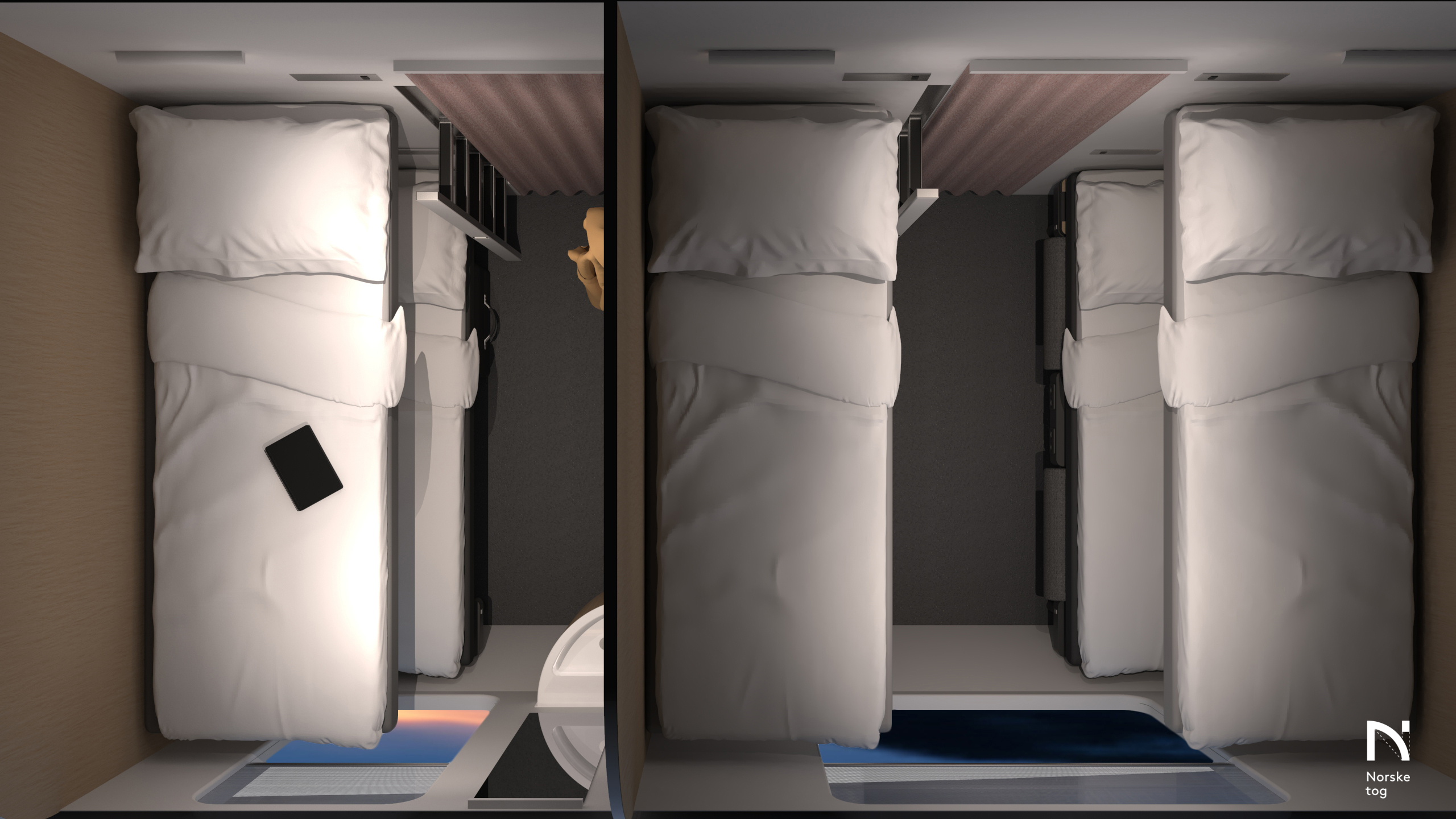Get a look at Norway’s new long-distance trains
Panoramic views, reclining seats, flexible sleeping compartments, a bistro – and not to forget the spacious luggage racks. Check out the photos to see how Norway’s long-distance trains are going to look.

The Norwegian state budget for 2022 includes a proposal to purchase new long-distance trains. The initial plan is to acquire 17. This is estimated to cost NOK 6.5 billion, with a limit of NOK 8 billion.
Norske Tog is now preparing for the announcement, and have had illustrations drawn up to show how these new trains are going to look. Train travel will become the most attractive mode of transport in Norway.
- This will provide a fantastic boost for the longer train journeys too. Trains shouldn’t just be a means to get from one place to another, rather, the train should be a place you enjoy being, says Øystein Risan, CEO of Norske Tog.
More exciting experiences with added comfort
The locomotives and carriages currently in use today will need to be replaced in the next few years. New trains will provide an opportunity to create a completely new kind of travelling experience.
- Norway is home to some of the world’s most spectacular train journeys, such as the Bergen and Dovre lines. On these railways, you get to travel close to the fjords and the mountains; alongside the most majestic nature Norway has to offer. We are therefore wanting to challenge our train manufacturers to create exciting solutions to celebrate this, Risan says.
New sleeping options
The new trains will include sleeping compartments that can be converted into private seating compartments during the day. This provides an opportunity to work in peace, and is perfect for business travellers who wish to work on their journey, Risan explains.
We have also challenged the train manufacturers to create more affordable sleeping options. This includes reclining seats, such as those that can be found in the first-class cabin when flying. We will also emphasise how important it is to ensure sufficient space for luggage on board, as well as for options for families.
- The trains we end up ordering will, at a minimum, provide customers with a service that is just as good as the one we have on offer today. We will, for example, set a requirement for sleeping compartments. However, beyond this, we will let the manufacturers use their expertise to show us what they can achieve. We create the best solutions when we work together, Risan adds.
Environmentally conscious
Norway has not yet electrified every part of the railway network. The new trains will either run on electricity, or take the form of hybrid trains, that can then be powered by either electricity or diesel.
In due course, the train manufacturers will also be challenged with the task of working out how operations can be made even more sustainable, such as by being able to rebuild the trains, or to order battery-powered trains.
- The development of new technology in this field happens very quickly. In this regard, we want to be a driving force. And although emissions from the railway today are low, the target is zero, Risan says.
New trains in action from 2026
While the new trains will use familiar and established technology, they must still maintain the option to be adapted to work with the Norwegian railway network. Construction should start in 2023, and the trains should be put into service from 2026. After the first trains have been delivered, the contract gives us the option to potentially order additional trains (totalling 100). This provides a level of flexibility and a long-term perspective that complement Norske Tog’s long-term plans, which have addressed the need for the phasing in and out of equipment between now and 2033.
Fact box: Business plan
2021: Norske Tog announces competitive tender for the procurement of new long-distance trains
2022: Tender deadline
2022: Contract signing
2025: First train for testing in Norway
2026: First train in traffic
2026-2033: The new long-distance trains are put into traffic






Contact person





